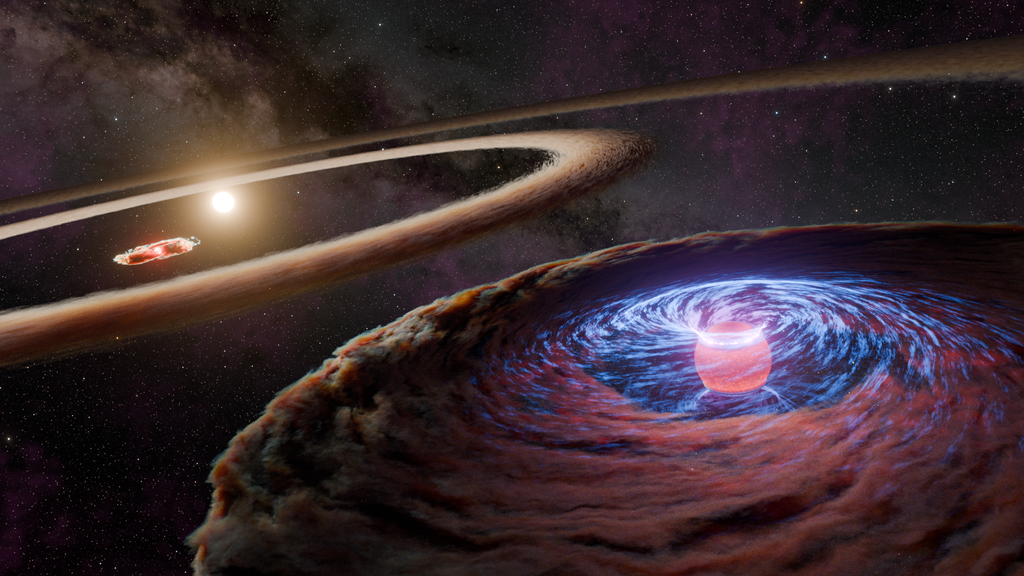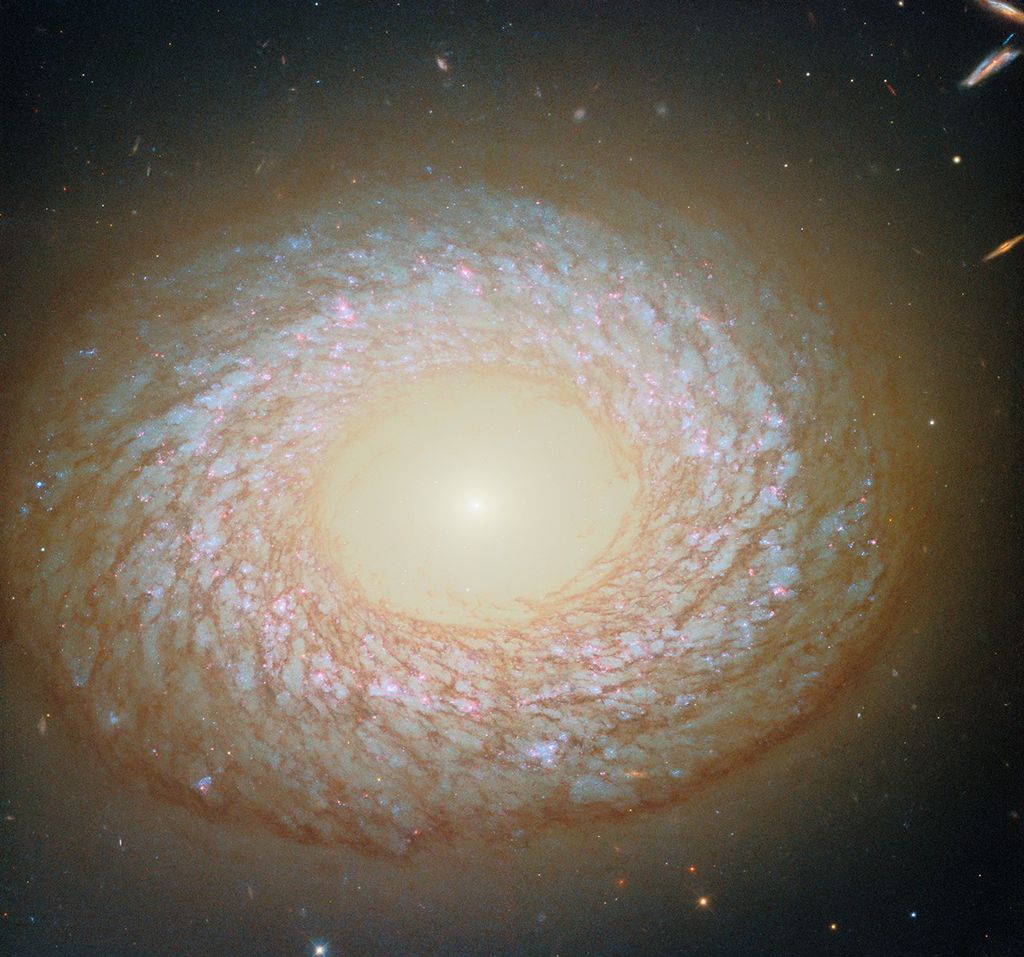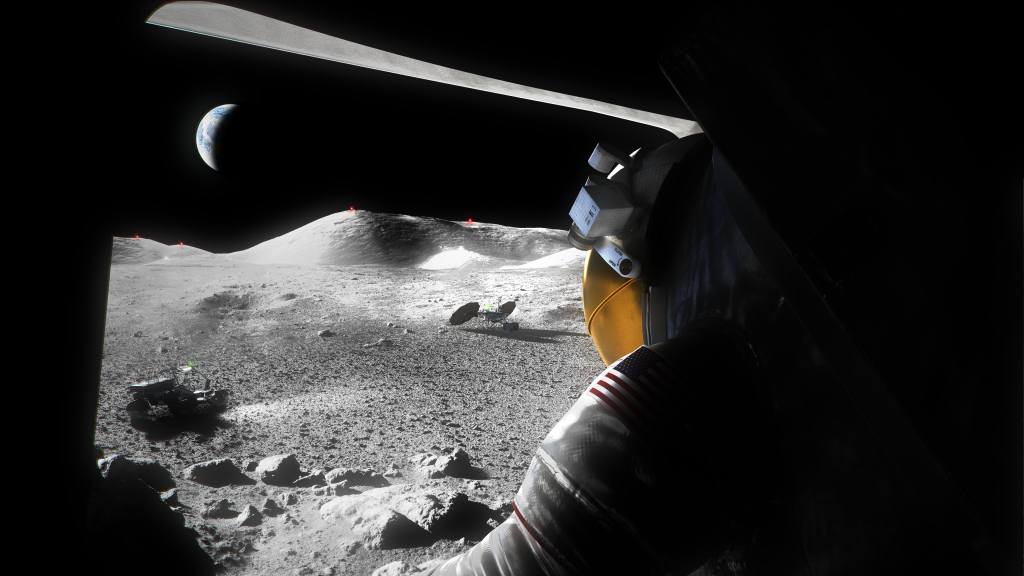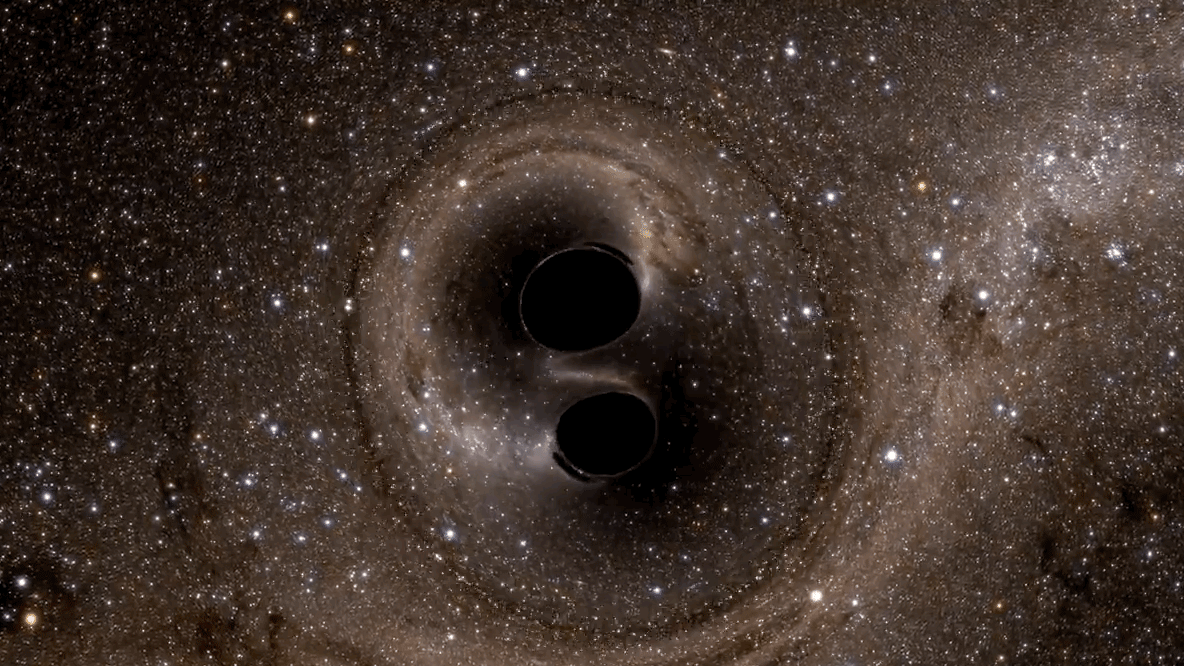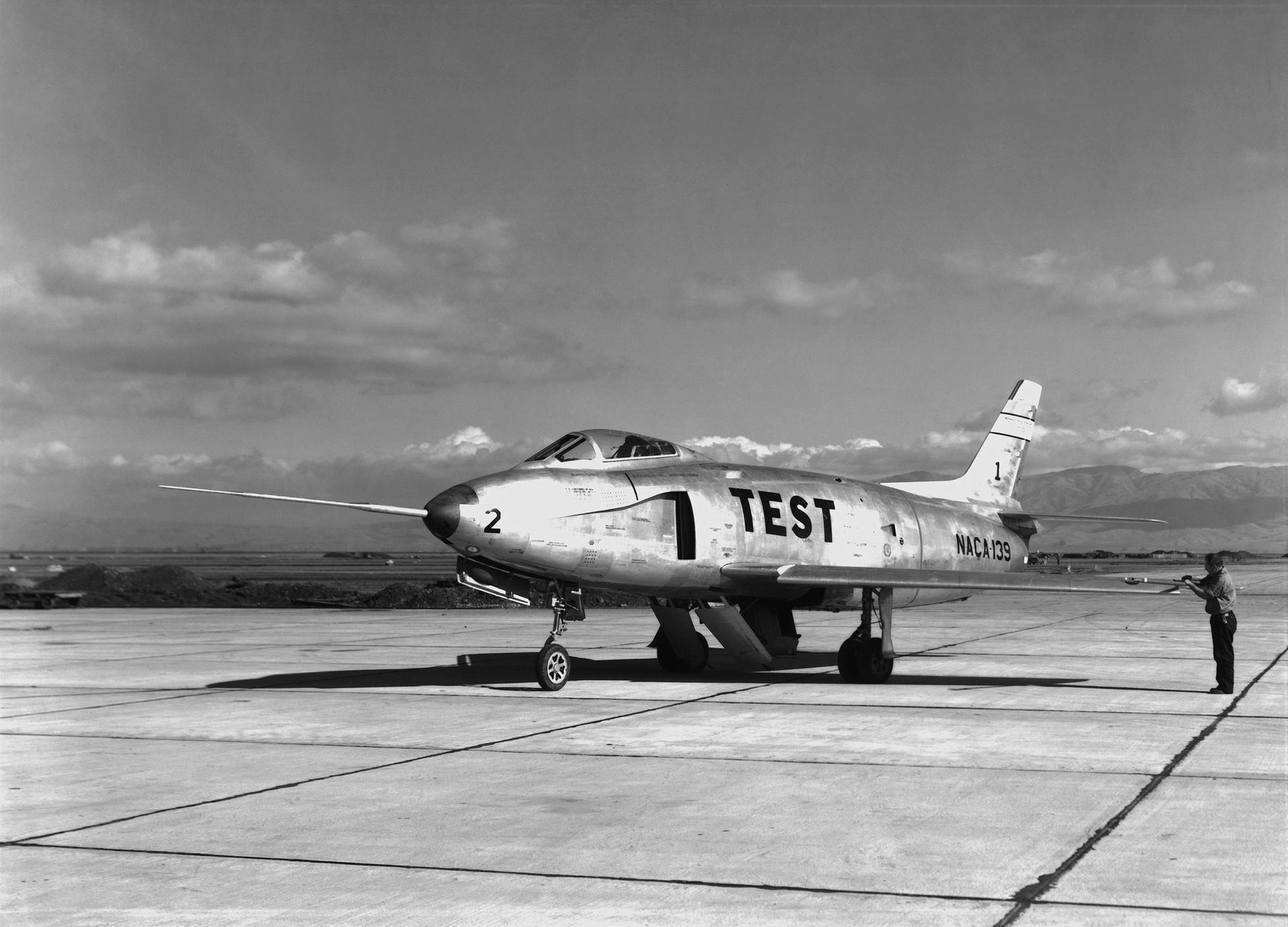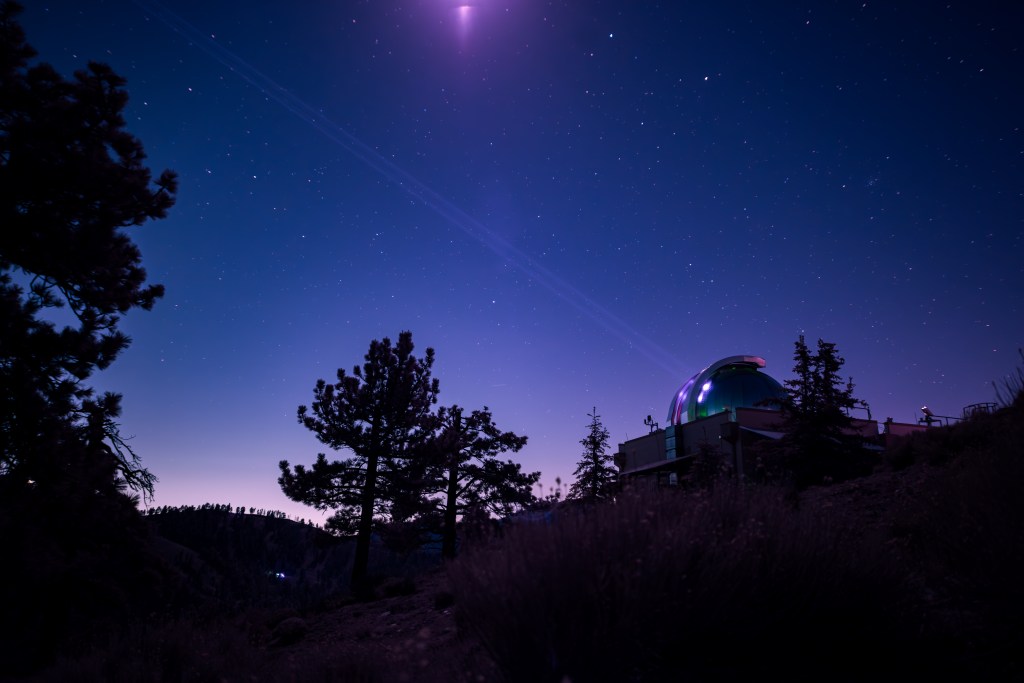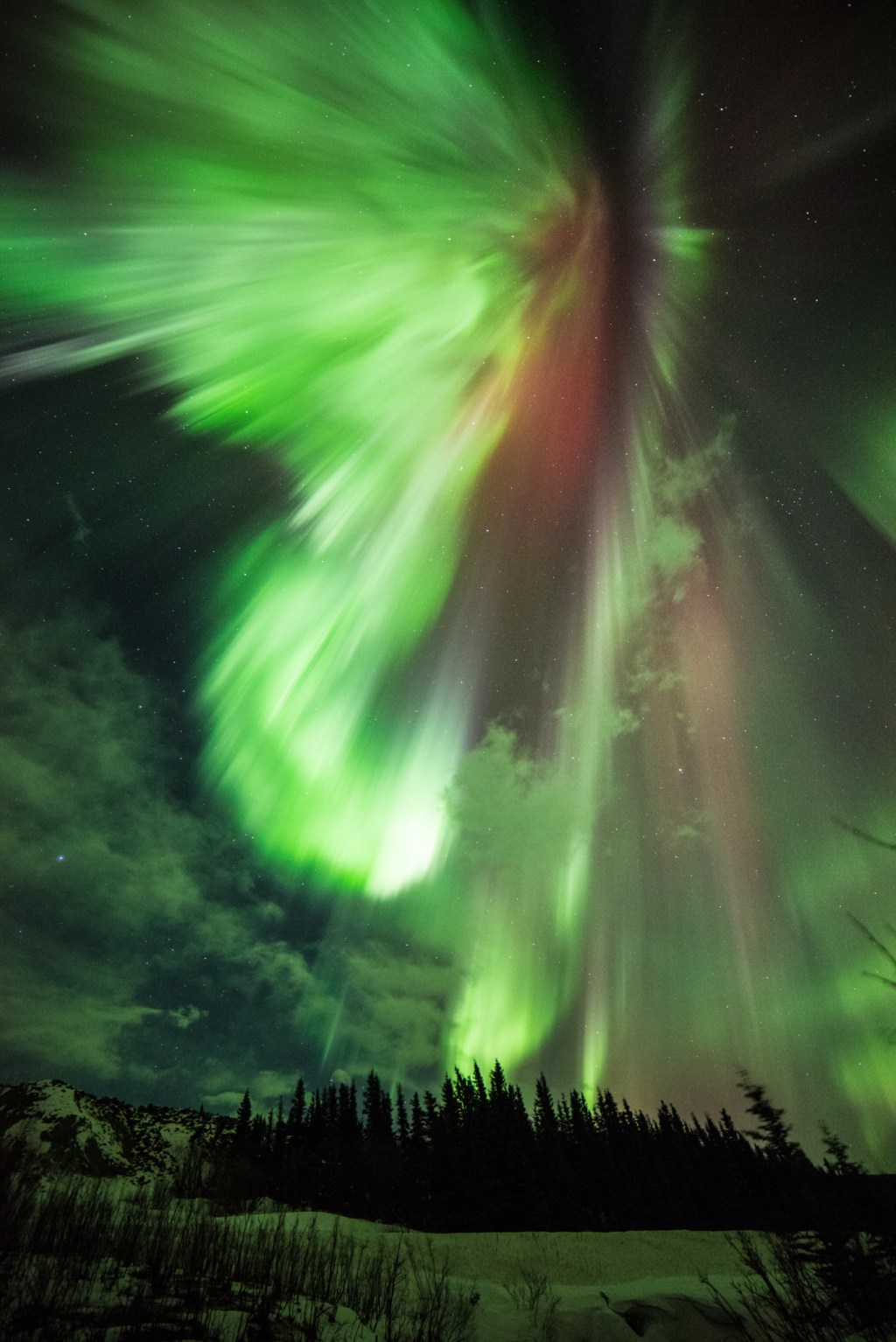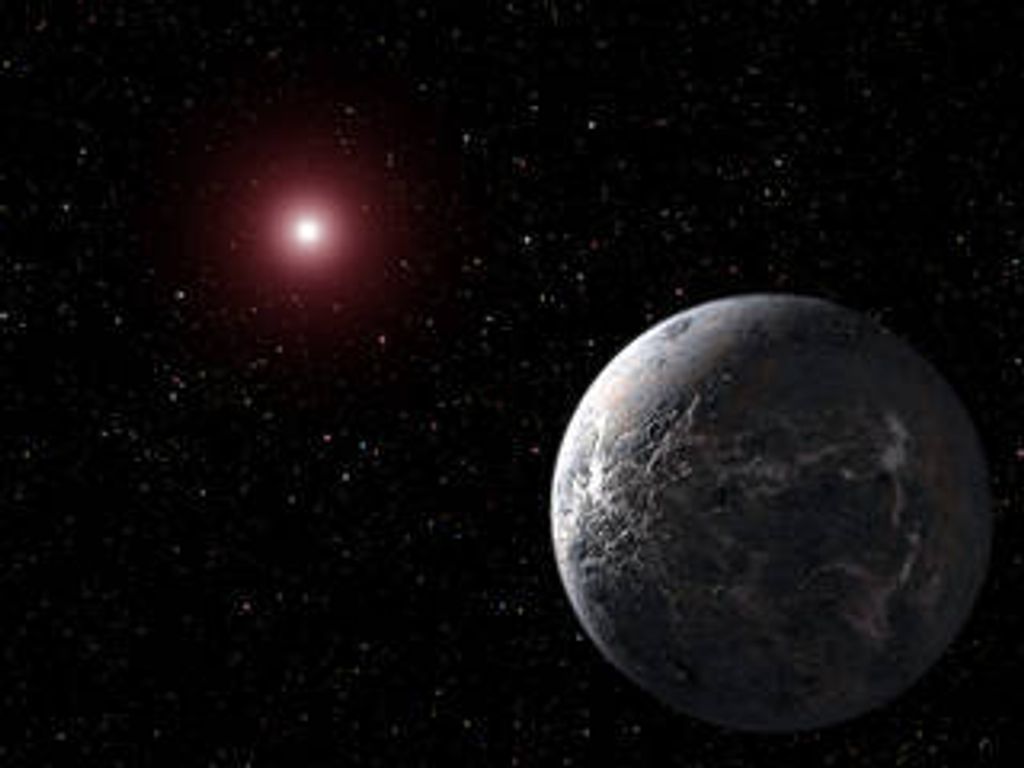1 min read
SPT0615-JD Lensed Galaxy (z~10)

Stretched Out Image of Distant Galaxy
This is a Hubble Space Telescope image of the farthest galaxy yet seen in an image that has been stretched and amplified by a phenomenon called gravitational lensing. The embryonic galaxy, named SPT0615-JD, existed when the universe was just 500 million years old. Though a few other primitive galaxies have been seen at this early epoch, they have essentially all looked like red dots, given their small size and tremendous distances. However, in this case, the gravitational field of a massive foreground galaxy cluster, called SPT-CL J0615-5746, not only amplified the light from the background galaxy but also smeared the image of it into an arc (about 2 arcseconds long). Image analysis shows that the galaxy weighs in at no more than 3 billion solar masses (roughly 1/100th the mass of our fully grown Milky Way galaxy). It is less than 2,500 light-years across, half the size of the Small Magellanic Cloud, a satellite galaxy of our Milky Way. The object is considered prototypical of young galaxies that emerged during the epoch shortly after the big bang.
About the Object
- R.A. PositionR.A. PositionRight ascension – analogous to longitude – is one component of an object's position.06:15:49.7
- Dec. PositionDec. PositionDeclination – analogous to latitude – is one component of an object's position.-57:46:41
- ConstellationConstellationOne of 88 recognized regions of the celestial sphere in which the object appears.Pictor
- DistanceDistanceThe physical distance from Earth to the astronomical object. Distances within our solar system are usually measured in Astronomical Units (AU). Distances between stars are usually measured in light-years. Interstellar distances can also be measured in parsecs.Galaxy Cluster: 7.7 billion light-years; Lensed Galaxy: 13.243 billion light-years
- DimensionsDimensionsThe physical size of the object or the apparent angle it subtends on the sky.Image is 2 arcmin across (about 4.5 million light-years at the distance of the cluster)
About the Data
- Data DescriptionData DescriptionProposal: A description of the observations, their scientific justification, and the links to the data available in the science archive.
Science Team: The astronomers who planned the observations and analyzed the data. "PI" refers to the Principal Investigator. - InstrumentInstrumentThe science instrument used to produce the data.ACS/WFC, WFC3/IR
- Exposure DatesExposure DatesThe date(s) that the telescope made its observations and the total exposure time.January 2012 and February - March 2017
- FiltersFiltersThe camera filters that were used in the science observations.F606W, F814W, F105W, F125W, F140W, F160W
- Object NameObject NameA name or catalog number that astronomers use to identify an astronomical object.Galaxy Cluster: SPT-CL J0615-5746 (z=0.972); Lensed Galaxy: SPT0615-JD (z~10.0)
- Object DescriptionObject DescriptionThe type of astronomical object.Galaxy cluster and distant lensed galaxy
- Release DateJanuary 11, 2018
- Science ReleaseNASA’s Great Observatories Team Up to Find Magnified and Stretched Out Image of Distant Galaxy
- Credit

These images are a composite of separate exposures acquired by the ACS/WFC and WFC3/IR instruments on the Hubble Space Telescope. Several filters were used to sample various wavelength ranges. The color results from assigning different hues (colors) to each monochromatic (grayscale) image associated with an individual filter. In this case, the assigned colors are: Blue: F606W Green: F814W Red: F105W + F125W + F140W + F160W

Share
Details
Claire Andreoli
NASA’s Goddard Space Flight Center
Greenbelt, Maryland
claire.andreoli@nasa.gov

